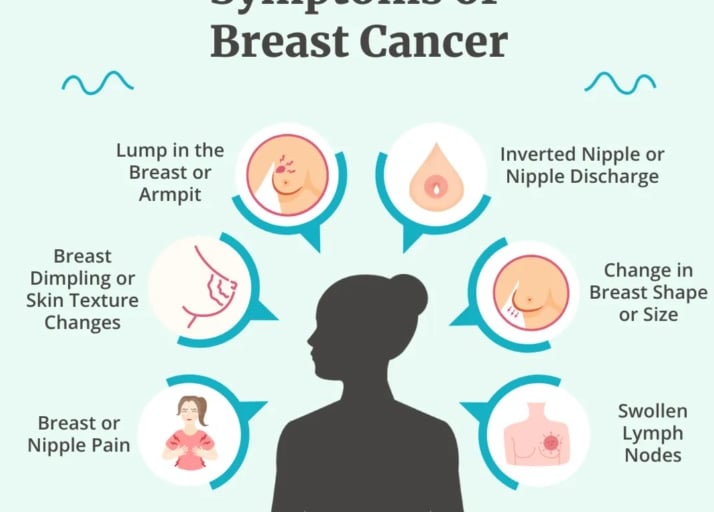Breast Cancer
Overview
Breast cancer is the most common cancer among women worldwide — and one of the leading causes of cancer-related deaths. Fortunately, with improved awareness, early detection, and advances in modern oncology, survival rates have risen dramatically. In India, rising awareness and access to screening are helping more women detect the disease at an early, curable stage.
Causes and Risk Factors
Breast cancer develops when abnormal cells in the breast grow uncontrollably, forming a lump or tumor. While the exact cause is not always known, several risk factors have been identified:
Age: Risk increases with age, especially after 40 years.
Hormonal factors: Early menarche, late menopause, or hormone replacement therapy.
Lifestyle factors: Obesity, alcohol intake, smoking, and sedentary lifestyle.
Reproductive history: Having no children or having a first child after 30.
Radiation exposure to the chest region.
Genetic Factors
A small but significant proportion of breast cancers are due to inherited genetic mutations such as:
BRCA1 and BRCA2 gene mutations – which markedly increase the risk of breast and ovarian cancers.
TP53, PTEN, and PALB2 mutations – associated with familial breast cancer syndromes.
Women with a strong family history of breast or ovarian cancer should consider genetic counseling and testing, as it helps identify high-risk individuals who may benefit from preventive strategies.
Common Symptoms
Early breast cancer may not cause any noticeable symptoms, which is why screening is vital. Common signs and symptoms include:
A painless lump or thickening in the breast or underarm.
Change in breast size or shape.
Nipple discharge (especially if bloody).
Retraction or inversion of the nipple.
Redness, dimpling, or puckering of the skin (peau d’orange appearance).
Persistent pain in one part of the breast.
Screening for Breast Cancer
Early detection saves lives. The following screening methods are recommended:
Breast Self-Examination (BSE): Monthly, starting from age 20.
Clinical Breast Examination (CBE): By a healthcare provider every 1–3 years (age 20–39) and annually after 40.
Mammography: The most effective screening tool; recommended every 1–2 years for women aged 40 and above.
Ultrasound or MRI: Used in younger women or high-risk patients with dense breasts.
Screening allows detection before symptoms develop, when the disease is most treatable.
Treatment Approaches
Treatment depends on the stage, tumor biology, and patient preference, and often includes:
Surgery: Breast-conserving surgery (lumpectomy) or mastectomy, with or without reconstruction.
Radiation Therapy: Used after surgery to eliminate residual cancer cells and prevent recurrence.
Chemotherapy: Kills rapidly dividing cancer cells, used before or after surgery.
Hormonal Therapy: For hormone receptor-positive cancers (e.g., tamoxifen, aromatase inhibitors).
Targeted and Immunotherapy: For cancers with HER2 positivity or triple-negative biology.
Cutting-Edge Cancer Care by Dr. Rajesh Natte
Dr. Rajesh Natte, a leading radiation oncologist, is transforming cancer care with precision and compassion. Using state-of-the-art radiotherapy techniques such as Image-Guided Radiotherapy (IGRT), Intensity-Modulated Radiotherapy (IMRT), and Deep Inspiration Breath Hold (DIBH) for left-sided breast cancers, Dr. Natte ensures accurate tumor targeting while sparing vital organs like the heart and lungs.
With the integration of AI-driven contouring, adaptive planning, and motion management systems, his approach achieves better tumor control, fewer side effects, and improved cosmetic outcomes. This cutting-edge, patient-centered technology enables women to recover faster and return to normal life with confidence.
Summary
Breast cancer, though common, is highly treatable — especially when detected early. Regular screening, awareness of symptoms, and timely treatment remain the cornerstone of cure. Through advanced technology and personalized care, Dr. Rajesh Natte continues to lead the way in providing world-class cancer treatment, empowering patients with hope and healing


